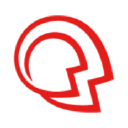Across many industries and verticals, companies are embracing customer-centricity. In contact centers, specifically, the question has changed from simply, “How do we reduce average handle time and limit costs?” to “If we believe in the idea of giving customers the best possible chance of being successful, what are we doing to make that belief a reality?” In this push to put customer experience first, knowledge management (KM) has emerged as an essential part of any organization’s tech stack, one that many have overlooked up until now. More than 43% of executive respondents to a recent Customer Contact Week Digital study, for example, identified “improving the knowledge base” as their top priority for 2019.1 Other priorities included “Improving offering in digital channels,” “Improving agent desktop,” and “Using AI to improve efficiency.” Though these priorities get close to the heart of the matter, the real challenge is finding a platform that supports all of these initiatives at once. It’s not an easy problem to solve. Yet, as many organizations are finding out, the right KM platform can support nearly all of these organizational priorities. The question is, how do organizations find the best fit? And what are the most useful criteria with which to evaluate this addition to their tech stack?






